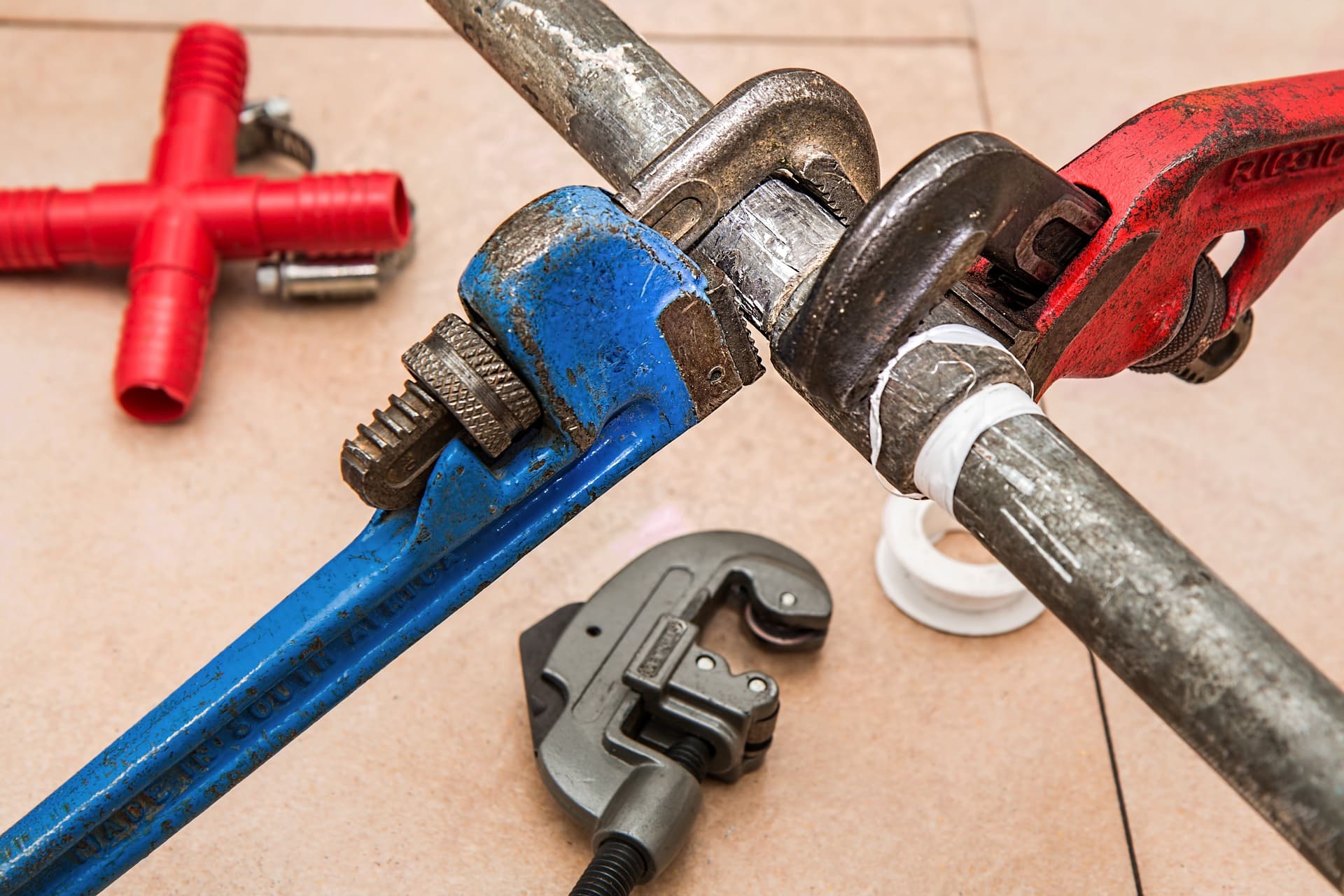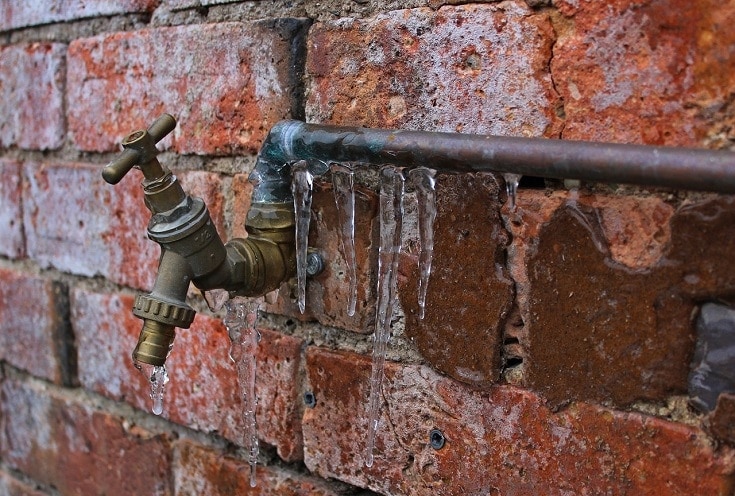How to Thaw Underground Frozen Pipes (Simple & Quick)
-
Pete Ortiz
- Last updated:

Winter can completely wreck your pipes. One cold night can cause underground pipes to freeze, reducing water flow and potentially causing your pipe to burst completely. Of course, a burst pipe is definitely a worst-case scenario. If you catch the frozen pipe early enough, you shouldn’t have as much to worry about.
For that reason, you need to thaw frozen pipes immediately. Unfortunately, frozen underground pipes are more difficult to thaw since you do not have easy access to them. In contrast, indoor pipes are easier to thaw because you have easier access and warm temperatures.
Still, thawing frozen underground pipes are doable with the right skills and knowledge. Here’s how to do it:
Indoor vs. Underground Pipes
Most everyone knows that water freezes at 32 degrees Fahrenheit, but your pipes often need lower temperatures to freeze. Building materials offer a bit of insulation, meaning that even non-insulated pipes freeze around 20 degrees Fahrenheit or below.
This fact makes frozen pipes somewhat of a non-issue for those who don’t live in super cold environments. That is especially true if the pipes are placed below the property’s frostline level. Depending on where you live, pipes can easily freeze if you live in an area where it routinely gets below 20 degrees Fahrenheit, though.
Thawing indoor pipes is much easier than thawing underground pipes. Since indoor pipes are inside, they are exposed to warmer temperatures, and they are more easily accessed. Underground pipes, in contrast, are typically surrounded by frozen ground, making them more susceptible to freezing and more difficult to reach.
Most underground thawing methods require you to evacuate the pipe, but there are ways that you can thaw the pipes without digging into frozen earth. The benefit of an evacuation-free method is that you don’t have to dig into soil that is frozen, which is an incredibly difficult task. The downside is that it may take longer to thaw out the blockage.

What You’ll Need
- Pond pump
- Gate valve
- Storage container (able to hold 5 gallons of water)
- 4-inch nylon hose, 125 feet long
Directions
Since thawing out an underground pipe is so difficult, many people prefer hiring a plumber for this job. If you have no experience with thawing underground pipes, then you might want to be one of those people. With a little bit of skill, however, you should be able to do this on your own.
- Fill the storage container with five gallons of water. It does not matter what temperature the water is.
- Get access to the supply line by unhooking the water meter.
- Place the storage bin filled with water underneath the pipe opening.
- If you do not have an existing valve for running the nylon tubing through, attach the gate valve to the supply line. This valve allows you to stop the flow, which will have 50 pounds or more worth of water pressure. In the case that you already have a valve, skip this step.
- Force water through the hose using the pump.
- Feed the hose into the supply line until you reach the blockage.
- Continue to work the tubing through the line until the blockage is melted by water.
- Keep pressing the tubing through until the water supply flows freely, showing that no more blockages remain.
- Once the water flows freely, shut off the valve.
- Reconnect the meter and open the valve again.
How to Prevent Frozen Underground Pipes
Unfortunately, it is difficult to prevent underground pipes from freezing. If you do not live in an area that does not get below 20 degrees Fahrenheit, then the best course of action may be to hope that it doesn’t happen again. This isn’t really helpful advice, but there is no helpful advice when it comes to underground pipes unless you hire a plumber or excavate the pipe.
In the case that you live in an area where it routinely gets under 20 degrees Fahrenheit, however, you might want to go through the trouble of insulating the underground pipes. To do this, you will need to excavate around the pipe and add insulation materials to the pipe.
Another technique would be to make sure that the pipes are below the frostline of the property. If you find that yours is not, you will need to move the pipes lower. Both of these tips will require extra money and a professional for installation.

Luckily, preventing other pipes from freezing is a lot easier. Here are some tips you may want to try out if you are worried about other pipes freezing in your home:
- Cover exterior faucets and reduce cold air exposure.
- Run a small amount of water in problem areas. This will increase your water bill but help reduce freezing.
- Place heat lamps in trouble areas.
- Insulate exposed pipes with pipe sponge or some other insulation material.
- Cover pipes in electrical heat tape. Be sure not to overlap the tape. Plug in whenever the weather gets cold.
FAQ
What are signs that a pipe is frozen?
There are normally two signs that a pipe is frozen:
- Great reduction in water pressure
- Burst pipe
If your pipe bursts, turn off the water supply immediately to protect your home from additional damage. In the case of a busted pipe, you may want to contact a professional.
Can underground frozen pipes thaw out on their own?
Technically yes. Since ice melts above a certain temperature, it is possible for the pipes to thaw out. Before the temperatures rise and the ice thaws, however, the pipe is more likely to burst. Do not hope that the blockage will melt on its own. Treat the issue as soon as you notice it to prevent costly breaks.
How do you thaw indoor pipes?
Indoor pipes are much easier to thaw. If the pipe is exposed, you can try thawing the ice using a hair dryer, heat lamp, hot towels, or electrical heating tape. For pipes that are enclosed, turn your thermostat up, place an infrared lamp in front of the wall, or cut a section out over the wall to expose the pipe.
Conclusion
Even though thawing underground pipes are more difficult than thawing indoor ones, the job is not impossible. Follow the steps above for a simple and quick method. If you are uncomfortable using this method, contact a professional. They will be able to thaw the pipe for you.
From there, take proactive steps to prevent your pipes from freezing, especially if you live somewhere where it freezes often.
Related Reads:
Featured Image Credit: 905513, Pixabay
Contents



